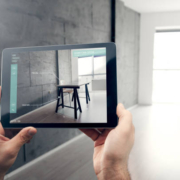The Rise of Augmented Reality in E-commerce: Enhancing Customer Experiences
In recent years, augmented reality (AR) has emerged as a groundbreaking technology, revolutionizing various industries. Among these, e-commerce stands out as a significant beneficiary of AR’s capabilities. Augmented reality has transformed the way customers interact with products online, offering immersive and personalized experiences. In this article, we will delve into the exciting world of augmented reality in e-commerce, exploring its benefits, implementation strategies, and the potential it holds for businesses in the digital era.
- The Power of Augmented Reality in E-commerce:
Augmented reality bridges the gap between physical and online shopping experiences, allowing customers to visualize products virtually before making a purchase. With the help of AR, e-commerce businesses can offer customers a more engaging and realistic shopping experience, enhancing customer satisfaction and boosting sales.
- Enhanced Product Visualization:
One of the significant advantages of AR in e-commerce is its ability to provide customers with an in-depth visualization of products. By leveraging AR technology, businesses can overlay virtual 3D models of products onto the real world, allowing customers to see how items will look and fit in their environment. Whether it’s trying on virtual clothing, visualizing furniture in a living room, or test-driving virtual cosmetics, AR enables customers to make more informed purchase decisions.
- Increased Customer Engagement:
Augmented reality has the power to captivate and engage customers in a way that traditional e-commerce cannot. By integrating AR features into their websites or mobile apps, businesses can offer interactive experiences that grab users’ attention and keep them on their digital platforms for longer periods. This increased engagement can lead to higher conversion rates and improved customer loyalty.
- Personalized Shopping Experiences:
Another key benefit of AR in e-commerce is the ability to deliver highly personalized shopping experiences. AR technology enables businesses to tailor product recommendations based on individual customer preferences and behaviors. By analyzing user data, AR-powered platforms can present customers with relevant product suggestions, leading to increased customer satisfaction and repeat purchases.
- AR Implementation Strategies for E-commerce:
Implementing augmented reality in e-commerce requires careful planning and execution. Here are a few strategies to consider:
a. Mobile App Integration: Developing a dedicated mobile app with AR capabilities allows businesses to provide customers with seamless and immersive AR experiences on their smartphones. This approach ensures wider accessibility and enables customers to engage with AR-powered features wherever they go.
b. Virtual Try-On and Fitting Rooms: For fashion and beauty retailers, integrating virtual try-on features allows customers to virtually try on clothing, accessories, or makeup products. This empowers customers to make confident purchase decisions, reducing the likelihood of returns.
c. Interactive Product Showcases: Creating interactive 3D product showcases on websites or mobile apps enables customers to explore and interact with products from different angles. This feature gives them a closer look at the product’s details, fostering a sense of trust and transparency.
- Future Implications and Conclusion:
The future of e-commerce is closely intertwined with augmented reality. As technology continues to evolve, we can expect more advanced AR applications that will further revolutionize the online shopping experience. From virtual showrooms and immersive brand experiences to AR-powered product recommendations, the possibilities are vast.

